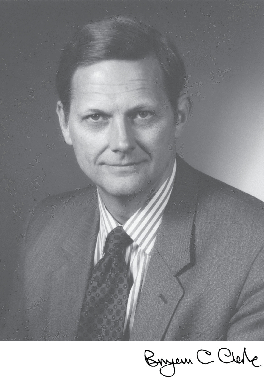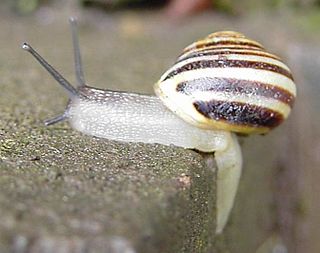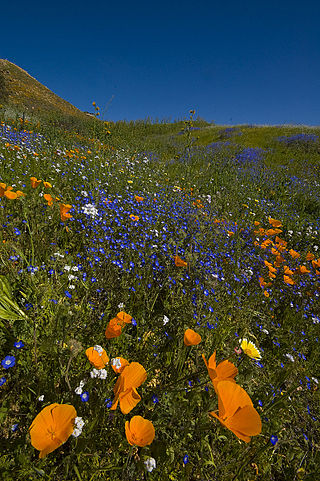Related Research Articles

The modern synthesis was the early 20th-century synthesis of Charles Darwin's theory of evolution and Gregor Mendel's ideas on heredity into a joint mathematical framework. Julian Huxley coined the term in his 1942 book, Evolution: The Modern Synthesis. The synthesis combined the ideas of natural selection, Mendelian genetics, and population genetics. It also related the broad-scale macroevolution seen by palaeontologists to the small-scale microevolution of local populations.

John Stephen JonesDSC FLSW is a British geneticist and, from 1995 to 1999 as well as from 2008 to June 2010, was Head of the Department of Genetics, Evolution and Environment at University College London. His studies are conducted in the Galton Laboratory.

Edmund Brisco "Henry" Ford was a British ecological geneticist. He was a leader among those British biologists who investigated the role of natural selection in nature. As a schoolboy Ford became interested in lepidoptera, the group of insects which includes butterflies and moths. He went on to study the genetics of natural populations, and invented the field of ecological genetics. Ford was awarded the Royal Society's Darwin Medal in 1954. In the wider world his best known work is Butterflies (1945).
Ecological genetics is the study of genetics in natural populations. It combines ecology, evolution, and genetics to understand the processes behind adaptation.

In biology, polymorphism is the occurrence of two or more clearly different morphs or forms, also referred to as alternative phenotypes, in the population of a species. To be classified as such, morphs must occupy the same habitat at the same time and belong to a panmictic population.
Frequency-dependent selection is an evolutionary process by which the fitness of a phenotype or genotype depends on the phenotype or genotype composition of a given population.
Balancing selection refers to a number of selective processes by which multiple alleles are actively maintained in the gene pool of a population at frequencies larger than expected from genetic drift alone. Balancing selection is rare compared to purifying selection. It can occur by various mechanisms, in particular, when the heterozygotes for the alleles under consideration have a higher fitness than the homozygote. In this way genetic polymorphism is conserved.

Bryan Campbell Clarke was a British Professor of genetics, latterly emeritus at the University of Nottingham. Clarke is particularly noted for his work on apostatic selection and other forms of frequency-dependent selection, and work on polymorphism in snails, much of it done during the 1960s. Later, he studied molecular evolution. He made the case for natural selection as an important factor in the maintenance of molecular variation, and in driving evolutionary changes in molecules through time. In doing so, he questioned the over-riding importance of random genetic drift advocated by King, Jukes, and Kimura. With Professor James J Murray Jnr, he carried out an extensive series of studies on speciation in land snails of the genus Partula inhabiting the volcanic islands of the Eastern Pacific. These studies helped illuminate the genetic changes that take place during the origin of species.

In evolutionary biology, disruptive selection, also called diversifying selection, describes changes in population genetics in which extreme values for a trait are favored over intermediate values. In this case, the variance of the trait increases and the population is divided into two distinct groups. In this more individuals acquire peripheral character value at both ends of the distribution curve.

William Ball Provine was an American historian of science and of evolutionary biology and population genetics. He was the Andrew H. and James S. Tisch Distinguished University Professor at Cornell University and was a professor in the Departments of History, Science and Technology Studies, and Ecology and Evolutionary Biology.
A supergene is a chromosomal region encompassing multiple neighboring genes that are inherited together because of close genetic linkage, i.e. much less recombination than would normally be expected. This mode of inheritance can be due to genomic rearrangements between supergene variants.

The grove snail, brown-lipped snail or lemon snail is a species of air-breathing land snail, a terrestrial pulmonate gastropod mollusc.
Ecology and evolutionary biology is an interdisciplinary field of study concerning interactions between organisms and their ever-changing environment, including perspectives from both evolutionary biology and ecology. This field of study includes topics such as the way organisms respond and evolve, as well as the relationships among animals, plants, and micro-organisms, when their habitats change. Ecology and evolutionary biology is a broad field of study that covers various ranges of ages and scales, which can also help us to comprehend human impacts on the global ecosystem and find measures to achieve more sustainable development.

Cepaea is a genus of large air-breathing land snails, terrestrial pulmonate gastropod molluscs in the family Helicidae. The shells are often brightly coloured and patterned with brown stripes. The two species in this genus, C. nemoralis and C. hortensis, are widespread and common in Western and Central Europe and have been introduced to North America. Both have been influential model species for ongoing studies of genetics and natural selection. Like many Helicidae, these snails use love darts during mating.
G.D. Hale Carpenter MBE was a British entomologist and medical doctor. He worked first at the London School of Hygiene and Tropical Medicine, and in Uganda, on tse-tse flies and sleeping sickness. His main work in zoology was on mimicry in butterflies, an interest he developed in Uganda and Tanganyika. He succeeded E.B. Poulton as Hope Professor of Zoology at Oxford University from 1933 to 1948.
Denis Frank Owen was a British ecologist, naturalist, author, broadcaster and teacher.
Many types of polymorphism can be seen in the insect order Lepidoptera. Polymorphism is the appearance of forms or "morphs" differing in color and number of attributes within a single species. In Lepidoptera, polymorphism can be seen not only between individuals in a population but also between the sexes as sexual dimorphism, between geographically separated populations in geographical polymorphism and also between generations flying at different seasons of the year. It also includes the phenomenon of mimicry when mimetic morphs fly alongside non-mimetic morphs in a population of a particular species. Polymorphism occurs both at a specific level with heritable variation in the overall morphological design of individuals as well as in certain specific morphological or physiological traits within a species.

Frequency-dependent foraging is defined as the tendency of an individual to selectively forage on a certain species or morph based on its relative frequency within a population. Specifically for pollinators, this refers to the tendency to visit a particular floral morph or plant species based on its frequency within the local plant community, even if nectar rewards are equivalent amongst different morphs. Pollinators that forage in a frequency-dependent manner will exhibit flower constancy for a certain morph, but the preferred floral type will be dependent on its frequency. Additionally, frequency-dependent foraging differs from density-dependent foraging as the latter considers the absolute number of certain morphs per unit area as a factor influencing pollinator choice. Although density of a morph will be related to its frequency, common morphs are still preferred when overall plant densities are high.
John Donald Currey, was a British zoologist who lectured at the University of York where he specialised in the biomechanics of mineralised tissues such as bone.
References
- 1 2 3 Clarke, B.C. (2008). "Arthur James Cain. 25 July 1921 – 20 August 1999". Biographical Memoirs of Fellows of the Royal Society . 54: 47–57. doi:10.1098/rsbm.2007.0034. S2CID 73131707.
- ↑ "Arthur J. Cain Papers Mss.Ms.Coll.63". American Philosophical Society. Retrieved 2 July 2024.
- ↑ Cook, L. (2000). "A.J. Cain F.R.S. 1921-1929". Malacological Bulletin. 34. Retrieved 2 July 2024.
- ↑ Cook, L.M. (2024). "Arthur Cain and ecological genetics in the Oxford Zoology Department". Archives of Natural History. 51 (1): 73–85. doi:10.3366/anh.20240897.
- ↑ Cain A.J. and Provine W.B. 1991. Genes and ecology in history. In Berry R.J. & others (eds) Genes in ecology: the 33rd Symposium of the British Ecological Society. Blackwell, Oxford.
- ↑ Huxley J. 1942. Evolution: the modern synthesis (2nd ed 1963, 3rd ed 1974)
- ↑ Elton C.S. 1927. Animal ecology.
- ↑ Cain & Provine W.B. 1991. Genes and ecology in history. In Berry R.J. Genes in ecology p5
- ↑ Robson G.C. and Richards O.W. 1936. The variation of animals in nature. Longmans, London.
- ↑ Cain & Provine W.B. 1991. Genes and ecology in history. In Berry R.J. Genes in ecology p8
- ↑ Cain & Provine W.B. 1991. Genes and ecology in history. In Berry R.J. Genes in ecology p9
- ↑ Ford E.B. 1964, 4th edn 1975. Ecological genetics. Chapman and Hall, London
- ↑ Ford E.B. 1965. Genetic polymorphism. All Souls Studies, Faber & Faber, London
- ↑ Fisher R.A. 1930. Genetical theory of natural selection p80.
- ↑ Cain A.J. and Currey J.D. 1963. Area effects in Cepaea. Phil Trans Roy Soc B246, 269–299.
- ↑ Cain A.J. and Currey J.D. 1968. Ecogenetics of a population of Cepaea nemoralis subject to strong area effects. Phil Trans Roy Soc B253, 447–482.
- ↑ Clarke B.C. 1979. The evolution of genetic diversity. Proc Roy Soc B. 205, 453–474.